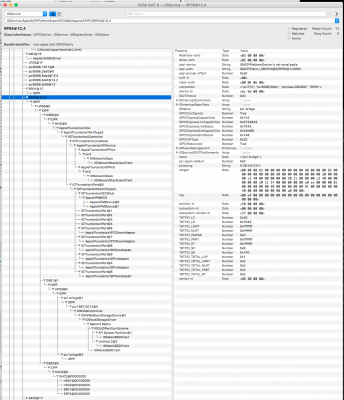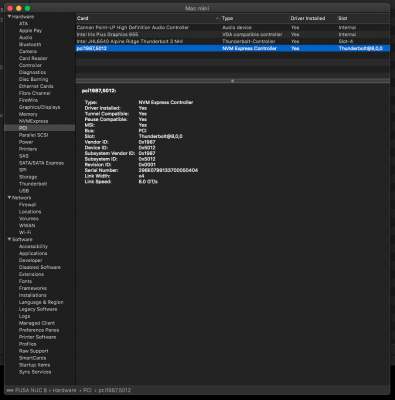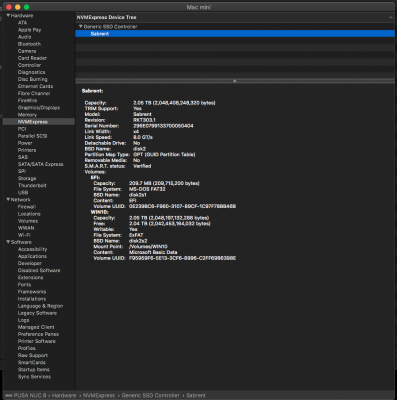- Joined
- Mar 26, 2020
- Messages
- 37
- Motherboard
- Gigabyte Z390 Designare
- CPU
- Intel i9 9900K
- Graphics
- Sapphire Nitro+ RX 580 8GB
- Mac
- Mobile Phone
FINALLY! I think I have found the problem. So, I did everything above and to my surprise it worked perfectly until I plugged my UAD Apollo Twin MK2 Thunderbolt interface. After I plugged the interface back, did a few restarts and started to crash again so I think the issue is related to TB3 somehow. What I can do to avoid this is when I need to switch I will shut down the computer and the interface and power them on again to boot into the other os.Last week my Test Bench lost the ability to sleep. Any attempt to put the machine to sleep or to wait for auto-sleep resulted in immediate wake. Activity Monitor revealed that a process called powerd was pegging one CPU core, and the sleep log (pmset -g log) was being constantly bombarded with log messages.
After nearly a full day of unsuccessfully trying to find and fix the root cause I decided to take my own advice and perform a completely fresh installation of Catalina and check again. My bootable backup, unfortunately, also suffered from insomnia, so it was of no help.
A fresh install took about 45 minutes to an hour, but sleep worked perfectly. I concluded that I may have inadvertently corrupted a system file while performing some Thunderbolt experiments that locked up the system and required hard boots.
With the fresh install working perfectly, I simply copied all my files manually (without using Migration Assistant) to the new disk and reinstalled (and relicensed) all my applications. That took another two hours, but after a total of about 3 hours I had a fully functional system once again. After letting it run for a day I erased the original NVMe SSD and cloned the new system back to the internal NVMe.
The moral of the story is clear:
In your case, however, we might still be able to recover the system if the macOS system itself has not been corrupted as follows:
- When faced with an intractable problem we can either spend hours upon hours or days upon days, or -- if time is precious -- we can just do a clean new installation and be done with it.
- Reinstall the Intel CNVi module.
- Remove the IntelBluetooth kexts.
- Install the standard V7 USB SSDT (SSDT-UIAC-DESIGNARE-Z390-V7) that disables HS14 and hence disabled the Intel Bluetooth module.
- FwRuntimeServices is okay, but you may also switch to the newer OpenRuntime.
- Definitely make the changes you identified in the Clover Configurator Boot Arguments screenshot. The differences in the ACPI section are not so critical.
I still have FwRuntimeServices because with OpenRuntime I can't get it to boot at all. It panics at "VirtualSMC" but as long as FwRuntimeServices works fine I don't mind sticking with it.
Thank you so much for your help! I did a double EFI back-up from this state.
Last edited:



